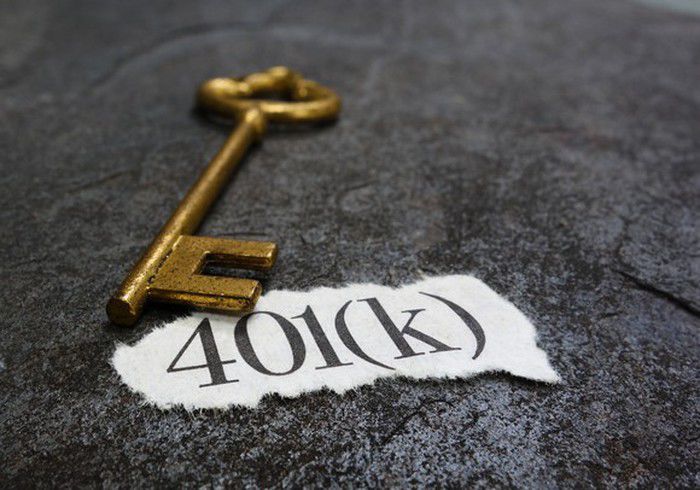
You likely already know that stashing cash in an employer-sponsored retirement plan is one of the most reliable ways to get ready for retirement. But not all 401(k)s are the same.
Sure, certain regulations — like the maximum contribution limit — are set by the IRS and therefore hold, no matter the employer or account custodian. But the company you work for has a lot of leeway in determining exactly how valuable your investments become in the long run.
Being in the job market is challenging enough and depending on your circumstances, you may or may not have the freedom to turn down a job offer just because the company’s 401(k) plan isn’t up to snuff. (As a freelance writer, I can tell you that any kind of benefits package sounds downright sexy.)
But knowing the anatomy of the ideal 401(k) can help you make an informed decision, should you be lucky enough to receive multiple job offers. Knowing what a perfect plan looks like can also help you negotiate with prospective employers or your current boss.
If the picture-perfect 401(k) were designed, it would have these following features.
1. It allows you to make daily, electronic changes.
Depending on the account custodian chosen by your employer, you may be able to make changes to your plan once a day, or once a quarter. While 401(k)s aren’t intended for day trading, you still want to be able to move your assets around as often and easily as possible.
The best 401(k)s come with an easy-to-use digital interface, where you can log on and make changes to your contribution amount and allocation choices as often as you’d like.
2. It includes a customizable brokerage interface.
The average 401(k) plan offers eight to 12 investment options, according to the Financial Industry Regulatory Authority. These may be limited to mutual funds alone, or include a small assortment of stocks, variable annuities, and other assets.
But ideally, you want access to an actual brokerage account, which unlocks the entirety of the market’s potential rather than forcing you to choose from a limited set of options. The best accounts will even allow you to bring in a financial planner, who can help you make informed allocation choices.
3. It has helpful retirement calculators and tools to set you up for success.
Simply thorwing your contributions in a target-date fund and hoping for the best is unlikely to cut it. Calculators and planning tools help make sure you’re realistically ready for retirement. And where better to access them than from inside your 401(k) plan’s user interface?
4. It comes with an employer match of 3% or greater.
Yes, a higher employer match is better (and harder to find). But even a match of 1% spells free money.
And depending on your specific employer, that match may be much more significant. For instance, Southwest Airlines offers its employees a match between 8.3% and 9.3%, according to its website, and an additional 11.3% bonus through profit sharing.
It’s worthwhile to take advantage of as much of the match as you can, since it means additional retirement funds at absolutely no additional effort. You might also consider negotiating with your employer during the hiring or review phases to increase how much you can earn from this powerful benefit.
5. You don’t have to wait to invest, or to become fully vested.
Even if your employer does offer a stellar 401(k) with a company match, you may not be able to take advantage of it immediately upon being hired.
Probation periods are sometimes put in place that keep you from making elective deferrals for a certain number of weeks or months. Once you begin making contributions (and hopefully having them matched), you may have to wait to become fully vested. This means your employer’s contributions may be partly or totally forfeited if you leave the job for any reason, within a certain timeframe, like a year.
The best 401(k) plan will let you start contributing a portion of your wages with your first paycheck, and will offer 100% vesting immediately upon implementation. (Don’t hold your breath when it comes to actually finding a position that offers such a generous package, however.)
6. It allows profit-sharing contributions.
In 2019, the personal contribution limit for a 401(k) is $19,000. But the total contribution limit is $56,000.
Even with an employer match, it would be pretty tough to make up the difference — which is where profit-sharing contributions come in.
A profit-sharing contribution is one made by your employer regardless of your elective deferrals, and which may be based on the company’s overall profit for the year. And for you, it’s a sweet, tax-deductible bonus and a great way to maximize your 401(k) without any additional effort.
7. It offers a Roth option.
Yes, Roth 401(k)s exist — and yes, they’re worth seeking out if you want to pay Uncle Sam up front and enjoy your tax break later.
“Most employers’ plans have Roth 401(k)s, but a lot of people don’t know to ask for it or to look for it,” says Malik S. Lee of Atlanta financial advisory firm Felton & Peel. “It’s one of the hidden gems,” he says, that you should try to scope out in the company documentation before you make your decision.
Even if your company’s 401(k) doesn’t come with any of these features, it’s a good idea to stash something away in it for later. And if your employer doesn’t offer a 401(k) at all? Sorry, that’s still no excuse for not saving for retirement — there are plenty of viable retirement-savings alternatives.























